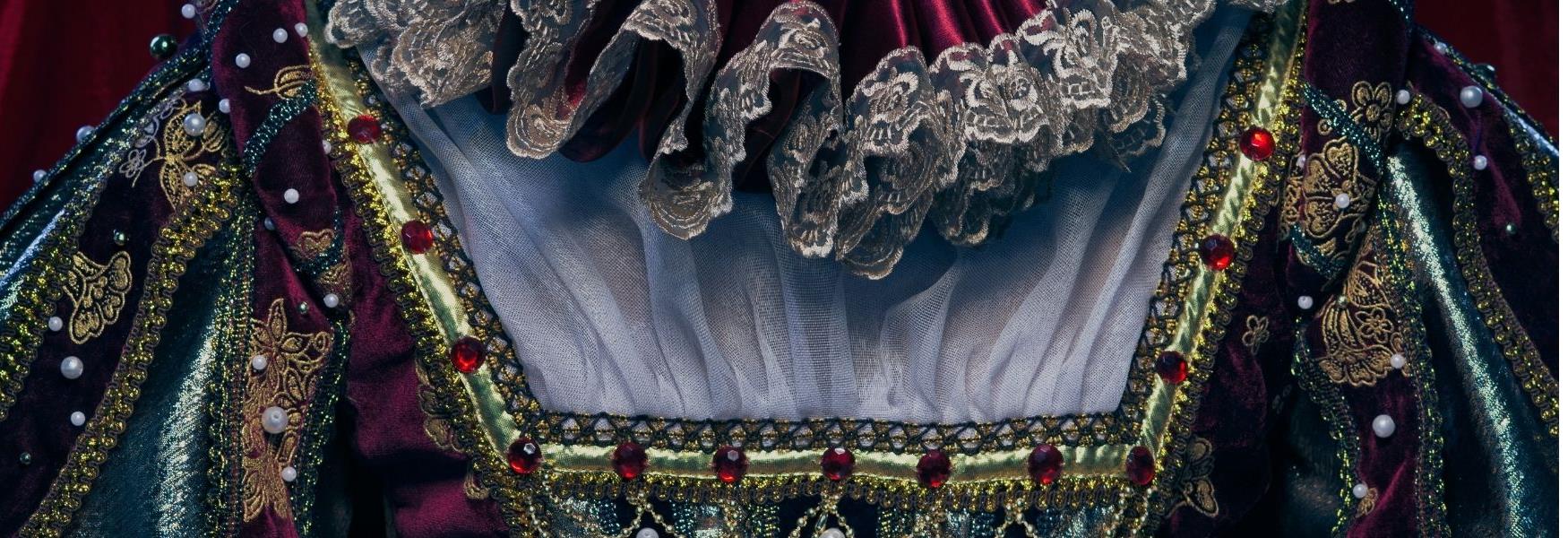To build your own Itinerary, click  to add an item to your Itinerary basket.
to add an item to your Itinerary basket.
Already saved an Itinerary?



You are here: UK History > Women's History > Timeline of Women
1135: Empress Matilda is named the rightful heir of the throne of England but is usurped by her cousin and a civil war wages.
1553: Lady Jane Grey is named the first queen of England. She is usurped by her cousin Mary I who is the first woman to rule England in her own right.
1637: Amye Everard Ball is the first woman in England to be granted a patent.
1660: Margaret Hughes becomes the first professional actress. Before then, women’s parts were all played by boys.
1693: The first women’s magazine is published
1792: Mary Wollstonecraft publishes A Vindication of the Rights of Women.
1811: The first women’s golf tournament takes place in Scotland
1842: Law bans women and boys under 10 from working underground in the mines.
1847: The Factory Act says women can only work 10 days in textile factories.
1868: Women are first admitted to university in Britain but can not earn degrees only certificates of proficiency.
1867: The London Society for Women’s Suffrage is formed.
1870: Married Women’s Property Act allows married women to own their own property, allowing women who are married, divorced or widowed to keep their property.
1878: Women are banned from working more than 56 hours a week in any factory.
1878: Women are allowed to leave their husbands if they are found to be violent.
1880: The first women are awarded degrees by a British university
1884: Women first play tennis at Wimbledon
1888: Certain classes of women allowed to vote in county and borough elections.
1892: Isabella Bird becomes the first woman member of the Royal Geographical Society
1894: Certain women allowed to vote in parish and district council elections
1895: Lilian Lindsay becomes the first woman to qualify as a dentist
1898: Ethel Charles becomes the first woman to qualify as an architect
1899: Hertha Ayrton becomes the first woman member of the Institution of Electrical Engineers.
1903: The Women’s Social and Political Union is founded in Manchester by Emmeline Pankhurst.
1906: The National Federation of Women Workers is founded
1907: Women are allowed to be elected onto councils
1908: Aldeburgh becomes the first town in Britain to elect a female mayor
1912: The Cat and Mouse Act is enacted allowing the government to temporarily discharge women on hunger strike from prison.
1914: Britain gets its first policewomen
1915: First Women’s Insitute is founded in North Wales.
1917: The Women’s Royal Naval Service is formed
1918: Women over the age of 30 who met certain property rights were given the vote.
1918: Constance Markievicz was the first woman to be elected to the House of Commons but refued to take her seat.
1919: Viscountess Nancy Astor became the first woman to take her seat in the House of Commons.
1920: Sex Discrimination Removal Act is passed allowing women to access legal profession and accountancy.
1921: Marie Stopes opens the first UK’s birth control clinic.
1921: Unemployment benefits are extended to include wives.
1922: Ivy Williams is the first woman called to the bar
1922: Carrie Morrison becomes the first female solicitor in the UK
1922: The Law of Property Act allows both husbands and wives to inherit equally.
1923: The Matrimonial Causes Act makes grounds for divorce the same for all genders.
1928: All women aged over 21 were given voting rights.
1929: Women allowed to vote in the General Election for the first time.
1929: Margaret Bondfield becomes the first female cabinet minister
1936: Elizabeth Cowell becomes the first female television announcer for the BBC
1939: Vivien Leigh becomes the first British Actress to win the Academy Award for the Best Actress for her role in Gone with the Wind
1941: The National Service Act is passed introducing conscription for women, all unmarried women between 20 and 30 are given war work. This later is extended to include those up to the age of 43 and married women.
1943: Author Beatrix Potter died, leaving her land to the National Trust which would eventually make up the Lake District National Park.
1946: Lilian Lindsay becomes the first woman president of the British Dental Association
1948: NHS gives everyone free access to health care, previously only insured men benefitted.
1951: Rosalind Franklin became notable for her work on X-Ray diffraction images of DNA which would lead to the discovery of the DNA double helix.
1952: Queen Elizabeth II becomes Queen of England
1955: Barbara Mandell becomes the first woman newsreader on British TV
1956: Women teachers and civil servants legally given equal pay.
1958: Britain gets their first female bank manager.
1958: Like Peerages Act entitles women to sit in the House of Lords for the first time. Baroness Swanbourough, Lady Reading and Baroness Barbara Wooton are the first to sit.
1961: The contraceptive pill becomes available through the NHS to married women.
1962: Elizabeth Lane appointed the first female judge in a county court.
1964: Married Women’s Property Act entitles women to keep half of any savings.
1965: Elizabeth Lane also appointed the first female judge to sit at the High Court
1965: Barbara Castle is appointed Minister of Transport, the first female Minister of State.
1967: The contraceptive pill becomes available to single women through the NHS.
1967: Abortion legalised.
1968: Equal Pay Act initiated by women at the Ford factory in Dagenham striking over equal pay.
1970: Working women refused mortgages unless they have a male guarantor
1970: First Women’s Liberation Conference is held
1971: First Women’s march takes place in London
1972: Rose Heilbron was the first female judge to sit at the Old Bailey.
1972: First women’s refuge in Chiswick, London is set up by Erin Prizzy
1972: Betty Boothroyd becomes the first female Speaker of the House of Commons. She held the position for 8 years.
1973: The London Stock Exchange includes female members for the first time.
1974: National Women’s Aid Federation set up.
1975: Sex Discrimination Act makes it illegal to discriminate against women in work, education and training.
1975: The Employment Protection Act introduced maternity provision
1976: Domestic Violence and Matrimonial Proceedings Act introduced to protect women and children from domestic violence
1977: Britain appoints their first female train driver, Karen Harrison
1977: International Women’s Day is formalised as an annual event by the UN
1977: First Rape Crisis Centre opens
1978: Women’s Aid Federation of Northern Ireland established.
1979: Britain elects first female Prime Minister. Margaret Thatcher held the post for 11 years.
1980: Women can apply for a loan or credit in their own names.
1981: Baroness Young becomes the first woman leader of the House of Lords.
1982: Josephine Reynolds becomes the UK’s first female firefighter
1982: Court of Appeal decides that bars and pubs are no longer able to refuse to serve women
1982: Lady Mary Donaldson becomes the first woman Lord Mayor of London
1985: New Equal Pay Act allows women to be paid the same as men for work of equal value.
1986: New act allows women to retire at the same age of men and lifts the restriction on women working night shifts in factories.
1987: Diane Abbot becomes the first Black female member of parliament.
1988: Elizabeth Butler-Sloss becomes the first woman Law Lord when she is appointed an Appeal Court Judge.
1990: Independent taxation for women is introduced so they are taxed separately from their husbands
1991: The composite Tax System changes law so women are allowed more independence and freedom from their husbands or partners.
1991: Helen Sharman becomes the first British Astronaut
1991: Stella Rimington becomes the first female director of MI5.
1994: Rape in marriage is made a crime
1995: Pauline Clare becomes the first female chief constable in Britain
1997: Majorie Scardino becomes the first female CEO of a FTSE 100 company
1997: 101 female MPs elected in the general election.
1998: The Spice Girls receive the highest annual earnings ever for a girl band.
1999: Law introduced which entitles women up to 18 weeks unpaid maternity leave.
1999: New law enables both men and women to take up 13 weeks off to care for children under age of five.
2002: Parliament passes measures to allow lesbian and unmarried couples to adopt children.
2003: Female Genital Mutilation is made an offence by British nationals even in countries where the practice is legal.
2006: Margaret Beckett becomes the first female Foreign Secretary
2007: Jacqui Smith becomes the first female Home Secretary
2011: Singer Adele becomes the first female singer to have 2 singles and 2 albums in the UK’s top 5 at the same time, something only previously achieved by the Beatles in 1963.
2012: Singer Adele’s album becomes the first album in UK chart history to reach 3 million sells in less than one year.
2013: Royal Succession law changed to state that the first born would succeed the throne regardless of gender
2014: Nicola Sturgeon is named the first female First Minister of Scotland and first female Leader of the Scottish National Party.
2015: Queen Elizabeth II becomes UK’s longest reigning monarch.
2015: Singer Adele’s music video for her song Hello was the fastest video ever to reach 1 billion views on YouTube
2016: Theresa May elected as the UK’s second Prime Minister
2017: Cressida Dick is appointed the UK’s first female Met Police Commissioner
2017: Rev Sarah Mullally named of the first Bishop of London
2017: BBC show Doctor Who names their first female doctor, she was played by Jodie Whittaker
2017: Karen Pierce becomes the first UK ambassador to the UN
2017: The Tate appoints their first female director, Maria Balshaw
2017: The British Army announces the first female officer bound for a frontline combat job.
2018: UK parliament announces the first female Black Rod in 650 years, her name is Sarah Clarke
2018: A statue is erected in Parliament Square of Millicent Fawcett – the first female statue to be put up.
© Visit Heritage 2025. All Rights Reserved

.png)


